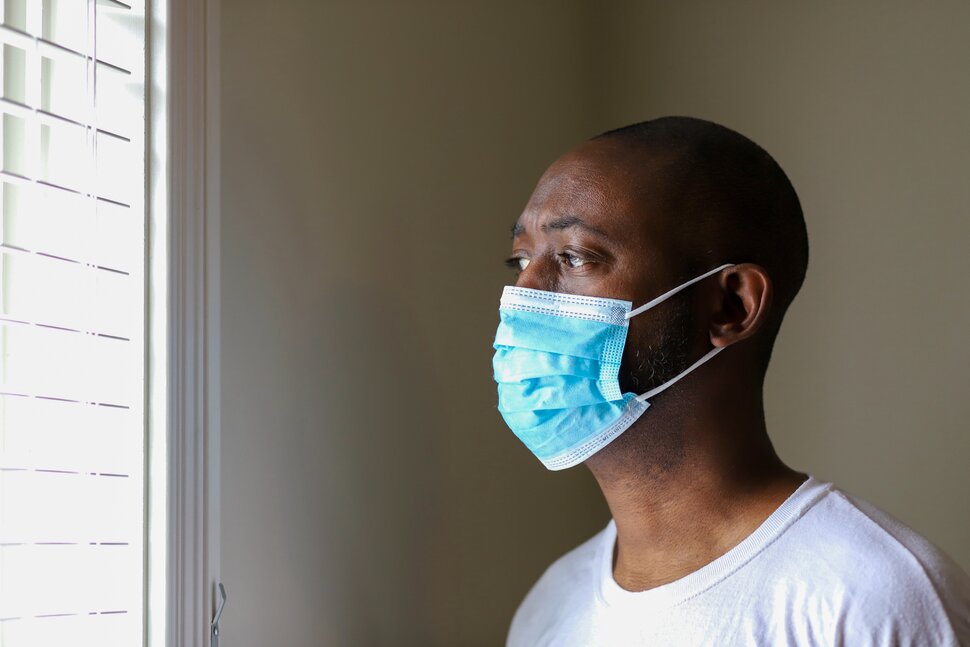
Black Covid
It’s Time to Aggressively Target Another Top Killer of Black Americans
As with COVID-19, Black Americans face increased risks from cardiovascular disease. More can be done to help.
We’ve seen an increase in the share of Black Americans vaccinated against COVID-19 due to aggressive campaigns. Similar public efforts should work to provide Black Americans with information about their unique risk factors for cardiovascular disease, which continues to be a top killer of this population.
COVID-19 has caused more than 700,000 deaths in the United States. Blacks are close to three times as likely to be hospitalized and twice as likely to die of COVID-19 as their white counterparts, though both groups have more similar rates of infection.
Extensive media coverage has increased public awareness of these disparities, and the federal government has provided billions of dollars for community efforts aimed at closing these types of gaps. Such initiatives have contributed to an increase in COVID-19 vaccination rates among Black Americans: From May to October of 2021, the estimated share of fully vaccinated Black people in the U.S. rose by 46%, compared with an increase of 18% among white people.
Meanwhile, heart disease is the No. 1 killer of all Americans and stroke is among the top 10 causes of death in the U.S. But Black Americans face an increased risk of mortality tied to these issues, with a roughly 50% higher death rate from stroke and a 30% higher likelihood of dying from heart disease than non-Hispanic whites.
The reasons for this are both simple and complex. Black Americans often have harder-to-treat high blood pressure, diabetes, high cholesterol and obesity. These major risk factors for cardiovascular disease are largely preventable and modifiable with heart-healthy diets, exercise, smoking cessation and weight loss. However, many Black Americans face socioeconomic barriers that impede their ability to adhere to such healthy lifestyle modifications. Food insecurity, inadequate housing conditions, exposure to adversity and insufficient social support are but a few factors that have been correlated with increased risk of worse outcomes from cardiovascular disease.

Indeed, along with traditional health factors, inequities in these “social determinants of health” pose risks for cardiovascular disease. In a recent Call to Action, the American Heart Association described social determinants of health as “conditions in the environment where people are born, live, learn, work, play, worship, and age that affect a wide range of health, functioning, and quality-of-life outcomes and risks.” Yet systemic disparities tied to race exist across many if not all of these areas.
As an acute care nurse practitioner managing the care of both COVID-19 and postoperative cardiovascular surgery patients in a high-acuity intensive care unit, I have witnessed the disproportionate disease burden experienced by Black patients. I see the toll years of accumulated stress takes when they are trying to recover from cardiac surgery and too often suffer from devastating complications. I see how much harder it is to control their blood pressure, help their wounds heal and aid their recovery from devastating strokes and heart attacks.
Frighteningly, the stressors and inequities hitting Black Americans are wreaking havoc on more and younger members of the population than ever before. High blood pressure, high cholesterol and diabetes are now often evident in childhood and early adulthood, and are correlated with impending cardiovascular disease. This means that tackling the many facets of racial inequity that manifest in poor cardiovascular health must start at an earlier age, and it is key that Black youth and adults understand these facts so they can reduce their risk factors.
Many programs are working to minimize traditional risk factors among Black adults, increase access to health care resources, reduce complications after stroke, heart attack or high blood pressure, and increase the number of clinicians of color. But on a federal level, funding is inadequate. The Office of Minority Health at the U.S. Department of Health and Human Services has a mission aimed at “improving the health of racial and ethnic minority populations through the development of health policies and programs that will help eliminate health disparities.” Yet with cardiovascular disease projected to burden the U.S. with more than $1 trillion in medical costs and lost productivity by 2035, there is insufficient funding available for cardiovascular disease prevention education among Black Americans.
At the same time, existing cardiovascular disease prevention education that does not include an acknowledgement of race-specific factors such as social determinants of health and physiologic stress does a disservice to Black Americans. Public health and medical professionals need to let Black Americans know not only how to prevent cardiovascular disease, but why it occurs in the first place. This may require building trust: Old wounds stemming from the unethical medical treatment of Black people in the U.S. are still fresh, evidenced in part by vaccine hesitancy during this pandemic.
Still, a concerted effort by health care providers, social media influencers, community-based organizations, federal and research institutions, professional associations, and educators to build this trust and warn Black youth and adults is necessary. And it can save Black lives.







